#softsynth
Explore tagged Tumblr posts
Text
EGO REFLUO
Il nuovo concept album di AFAN Alessandro Fantini è disponibile per l’ascolto e l’acquisto dal 2 febbraio su Bandcamp e sarà disponibile prossimamente sulla maggior parte delle piattaforme streaming. Mediando costantemente tra il regno degli istinti e la sfera delle norme sociali, l’Ego umano si autodefinisce nell’atto di fronteggiare il mondo esterno lungo i confini del Caos, oscillando tra…
#album#ambient#arte#canzone#concept#edm#elettronica#musica#pittura#poptronica#shoegaze#softsynth#synth
0 notes
Text
Nekobi ~ Single Oscillator Synth
Simple single-oscillator synth based on the Roland TB-303. github.com/DISTRHO/Nekobi A softsynth recreation of a classic single-oscillator bass monosynth. github.com/gordonjcp/nekobee

View On WordPress
0 notes
Text
after the recent benn jordan "all my gear in a tierlist" video... i kinda want to make a tierlist of all of the free softsynths ive used over the years.
from a quickly thrown together analysis script, i appear to have used 11,000 instances of 300 unique VSTs in the past 19 years...
hmm.
41 notes
·
View notes
Note
for the isat soundtrack, did you use pre-existing soundfonts, make your own, or didn't use soundfonts? i don't know much about music production so bear with me. also, if the first option, which ones did you use?
Fantastic question!
So there was exactly one song that used sound fonts (the SNES strings), otherwise it's entirely softsynths, multisamplers, and some recorded guitar and bass for a few songs.
If you're just getting started in making music there are a lot of free synths available from Native Instruments, and the Spitfire Audio LABS series has loads of cool free stuff as well. (You can also find bunches of free VSTs online!)
I have a lot of stuff in the studio, but I'll list out some of my current favs:
Xfer Records Serum - It's an absolutely incredible modular synth that has two channel AM/FM/RM modulation, wavetable synthesis, a bunch of really cool built-in effects, and there's so much automation you can do to create really amazing sounds.
Toontrack Superior Drummer - I have v2 + Metal Foundry, but they have a v3 now and loads of libraries available. Super customizable, absolutely the next best thing to just mic'ing up a kit yourself.
SubMission Audio Eurobass III - Honestly such a precise bass multisampler that has really detailed velocity and articulation control. Features heavily in our last album, DOOMTROID.
So to answer your question, a lot of things are either custom-designed in the studio or are built off of multisampling engines and then further modified and EQ'd to have a very particular sound.
I would just like to say that composition is FAR more important than having fancy plugins and experience with sound design and mixing, so go find yourself a bunch of free VSTs and focus on your composition first and learn the engineering part second.
12 notes
·
View notes
Text
Music production is hard man, it really bothers me how clean a lot of softsynths sound. My problem really is I want my stuff to sound like hardware synths from the 70s (close, doesn’t have to be perfect) but I don’t actually know how to achieve that with a VST / dont actually want to get into hardware synths . Well if you have any tips let me knhw
Thing for me is creating a sense of organic-ness and both a certain fuzziness / the illusion of Real space not simply slapping reverb and perhaps delay onto everything . And creating a harmonious sound like the equivalent of having a “color palette” for all sounds, which I’ve found difficult to do w softsynths because there’s so much potential and nothing like hardware limitations / recording quality bringing shit together. It’s like the way colors in hand drawn and scanned animation (generally) look a lot more appealing than digital stuff bc the properties of paint, camera quality pushing colors a certain direction, etc naturally brings everything together
I’m not like An Audiophile Im self taught and I enjoy working with limitations/making imperfect things and not spending forever on everything. But unfortunately using softsynths it is really easy for instruments to sound like “YouTube tutorial music” and that is the opposite of what I want
18 notes
·
View notes
Text
i know the trans girl thing is modular synthesizers but i really like those 90s-2000s workstation synths. i want one of those. 32 oscillators across 8 voices at least. i know those are so easy to replicate with a softsynth but i want knobs and buttons
6 notes
·
View notes
Text
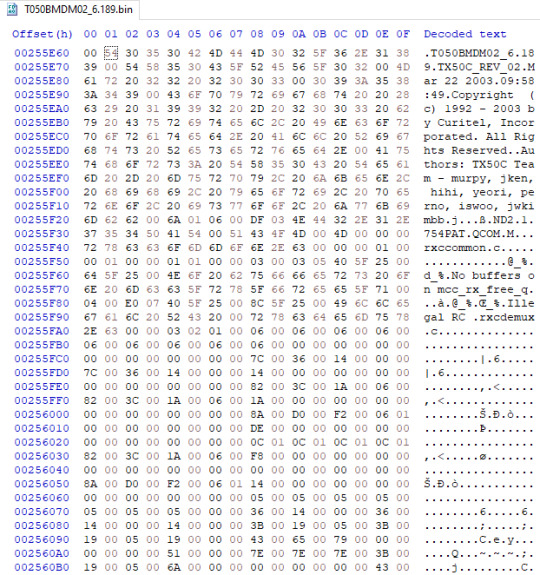
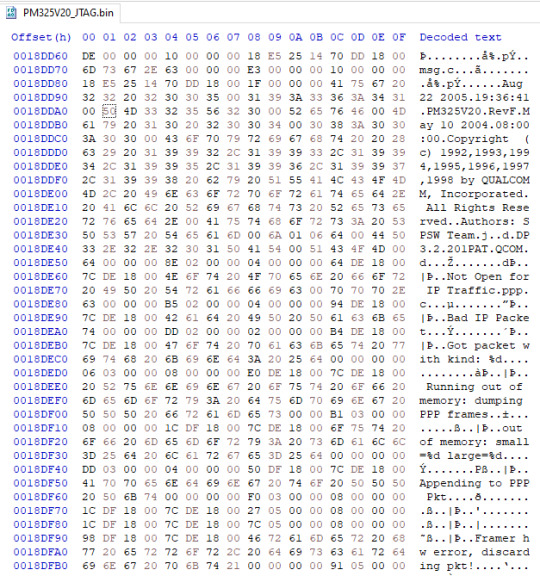
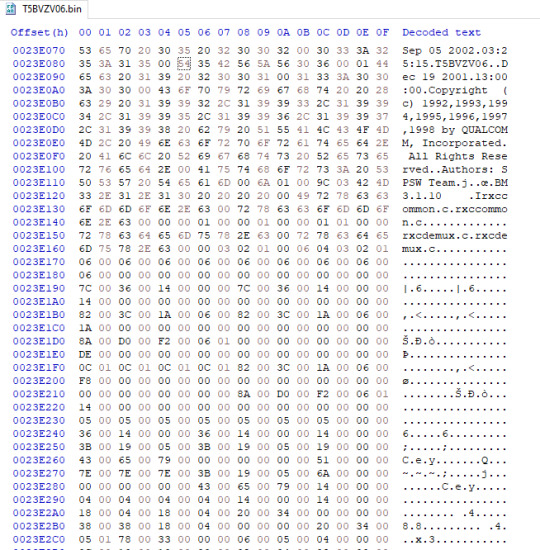
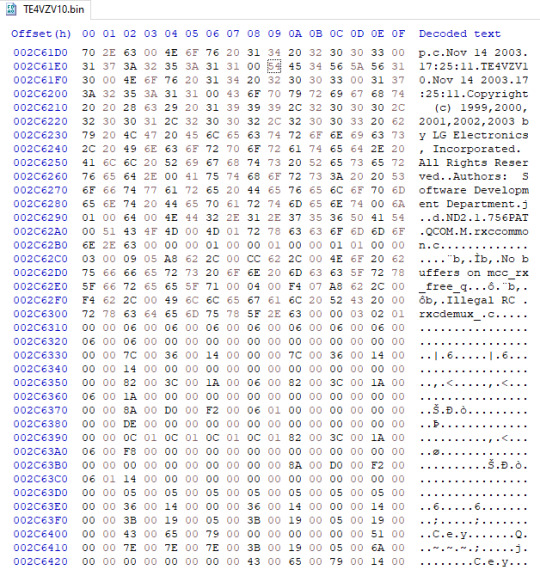
New year, more dumped phone firmwares!
Thanks to consistent lender Rare Noggin Stuff for sending these over:
Audiovox CDM-8500 (T050BMDM02_6.189)
LG PM325 (PM325V20)
LG VX10 (T5BVZV06) LG VX4400 (TE4VZV10)
Sejin NS1000
As always, what's new can be found on the Dumbphone Repo.
The Sejin NS1000 ought to get its own post some day. That simple looking phone was a bit infamous for some use cases, but the interesting part to me is how its MIDI softsynth makes heavy use of Roland SC-55 samples!
4 notes
·
View notes
Text
I love softsynths that have an interface that look like they come right of 2002. Literally the biggest selling point for me
4 notes
·
View notes
Text
i may change my mind on the new username but some ASSHOLE is squatting on synths and softsynth AND softsynths!!!!! EAT LEAD
5 notes
·
View notes
Text
A small rant about audio interfaces

If you record music or podcasts or voiceover work from a home studio, unless you’re going completely retro analog and doing stuff on tape, you need an audio interface to connect your real-world gear to your recording software; and this is how you get audio playback out of the software to your monitor speakers or headphones.
Here's a quick introduction to the topic, and some of my frustrations trying to find one that met my needs.
Generally, a consumer / prosumer audio interface will have some combination of the following:
Microphone preamps - these pre-amplify the low-level signals that come from microphones to make them audible, with adjustments to boost or cut gain as needed.
Often, mic preamps will also have the ability to send phantom power down the mic cable, which is a 48v current that can power certain kinds of mics like large-diaphragm condensers for vocals, or power other equipment like DI (Direct Inject) boxes for guitars and basses, to take the signal into a console or interface without using a guitar or bass amp. (Most Motown basses and guitars were recorded this way.)
Most consumer interfaces will have instrument level inputs so you can plug a guitar or bass directly, aka a DI.
Interfaces may have line-level inputs to accept signals from other devices like samplers, outboard effects units, CD players and the like. These are typically at a much higher signal level than mic or instrument level, but below headphone / speaker level. They’ll also typically have two or more line-level outputs, with one pair for the main outputs (stereo left and right) and then others which may be assignable via software (for specific tracks, submixes, etc).
They may be in standard rackmount format or a smaller desktop / portable form factor.
Smaller interfaces can work entirely off USB bus power; larger ones typically need an AC adapter or require mains power (typically a 3-prong IEC power cable).
So that all said, I’ve been trying to find a decent audio interface with four mic preamps, so I can plug in two mics and two DIs for guitar and bass, and have one left over for something else should the need arise.
This has to sit on my desk, so preferably I’d like something with ports on the back so that I can keep cable clutter to a minimum.
Weirdly, a lot of makers put their inputs on the front, which is convenient if you're plugging and unplugging guitars all day, but leads to a lot of cable clutter if you're not.
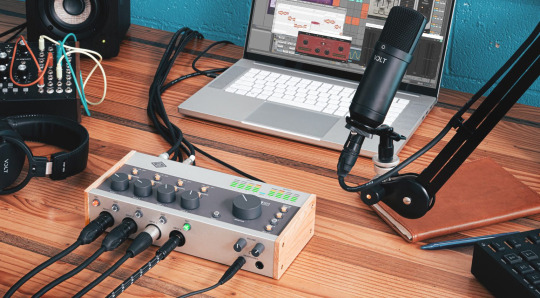
The clutter, it burns
Rackmount would be nice because then I could stash it under my computer display, but not all devices are rack-sized. Rackmount standards go way back, and are used for pro audio, broadcast, computing, and other equipment. Gear mounts onto a set of "rack rails" with metal ears, spaced 19" apart, and measured in 1.75" height increments, so a "1U" unit is 1.75" tall, a 4U unit is 7" tall, and so on.
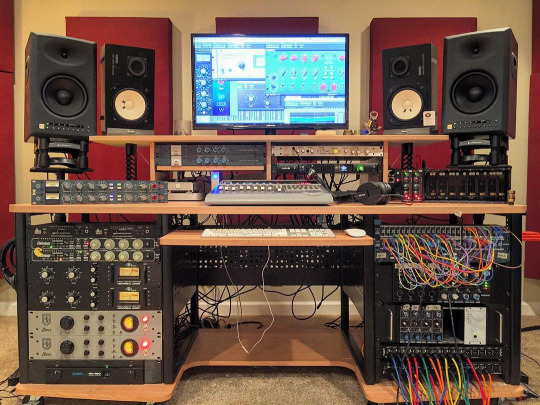
19" rack equipment mounted in special shelves and under-desk rack bays
I need 48v phantom power for two ports, but not for the other two, so they need to be switchable individually.
One of the most popular brands of interface is Focusrite, who started out as a high-end recording console company by the legendary designer Rupert Neve, but except for their expensive ISA range of preamps -- which aren't even interfaces!! -- on all of their products, you can't switch 48v on individually, only in banks of 4 inputs at a time. WHY?
And ideally, under $1,000 USD.
Where this gets frustrating for me is that there’s basically just a handful of devices that tick all the boxes:
MOTU M6 - $399 - Desktop, 4-input
Arturia 8pre - 8 inputs, rackmount, and the most expensive at around $800
PreSonus Quantum ES 4 - $329 - Desktop, 4-input
Solid State Logic SSL 12 - $499 - Desktop, 4-input
Audient ID44 - $699 - Desktop, 4-input
Now I've owned MOTU, Audient and SSL interfaces before, and I use Arturia's V Collection software (softsynth reproductions of vintage synthesizers, mostly) and their hardware has always been pretty good, too.
All of these seemed capable enough; the more expensive ones also feature ADAT optical input/output, which carries 8 channels of digital audio over a TOSLink style fiber optic cable.
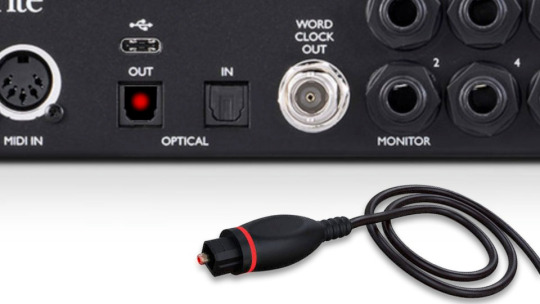
That's why the SSL 12 advertises itself as having "12 inputs" when 8 of them are really ADAT inputs - lots of companies do that. This is nice if you want to expand your input capacity, as there are many "preamp expanders" that don't have USB but send audio over ADAT.
So after shopping around, I got a really good deal on a demo PreSonus ES4, and tried it out, and man, it was the most finicky thing ever. (PreSonus is a US company now owned by Fender.)
First of all, even though it's a small, sleek, attractive desktop unit, it required an external USB power adapter, in addition to bus power over the data port, before it would power on successfully. I guess you can use a USB power bank on the go? Whatever.

Regular USB-C can deliver 15W of power, tops, so if it needs an additional 5W, that's means they expect your computer or laptop to support the USB-C Power Delivery standard (20W and up) to use a single cable - and since most don't as of yet, they really ought to include a USB power brick in the box.
Once I got it to power on, came the next weird thing: It wouldn't connect properly. Its little USB activity light would stay red. Apparently it didn't like connecting through a Thunderbolt hub, and it wouldn't even stay connected when directly connected to my laptop, it only stayed connected sometimes when connected via the USB hub on my monitor... when it didn't just completely lock up with all flashing red lights randomly.
So: Avoid PreSonus. (I seem to recall owning one of their Audiobox interfaces back in the day and having similar headaches. Never had issues like these with any other company.)
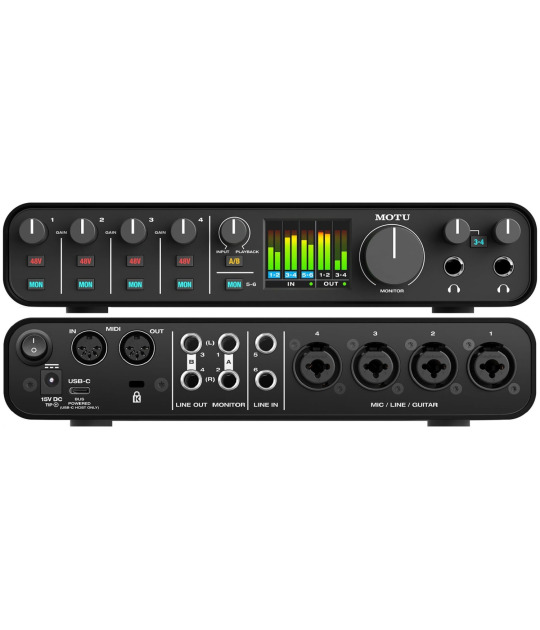
I returned it, and after shopping around, ended up with the MOTU M6, which I got a demo deal on again. So far, so good. To be continued!
0 notes
Text
In dirittura d'ascolto (nuovo album alle porte)
Il momento fatidico è alfine giunto. Se siete tra coloro che, memori (o amanti) del solenne rituale celebrato sul giradischi subito dopo l’acquisto di un vinile, riescono ancora a gustare la magia sinestetica del primo ascolto integrale di un album, fate in modo di non prendere impegni per Domenica 2 Febbraio alle ore 8:30 pm, quando su Bandcamp verrà svelato in esclusiva il mio nuovo concept…
0 notes
Text
🎉 finished recording my opinions on my softsynths
4h25m....... before cuts.
now to do it all again for my effects
1 note
·
View note
Text
Elevate Your Expression of Music Composition with Yamaha Digital Keyboard
For synthesists, keyboardists, and pianists looking for the best digital piano, Yamaha brings to you their latest launch the MONTAGE M which inspires new sound exploration with expressive control for making music.
Montage M8x is the new-generation flagship synthesizer from Yamaha. It is equipped with a variety of features that take your music-making to the next level. With this flagship synthesizer players can recreate warm vintage analog synths, cutting-edge FM synths, and ultra-realistic instrument sounds with its three engines that help in producing amazing sound dimensions. It comes with a motion control engine to enhance these capabilities, adding a unique fourth dimension of control to your piano keyboard while music making.

Unlike traditional hardware synthesizers or pianos, MONTAGE M8x seamlessly bridges stage and studio workflows with computer connectivity and integration that makes it a seamless task for musicians to practice and play at home. It is the ideal 88-key weighted action keyboard for pianists wanting a weighted keyboard, and synth players wanting expressive polyphonic aftertouch.
The MONTAGE Series introduces a new era of sound, control, and workflow in music creation with its MONTAGE M8x. It has brought a revolution in the three segments of music creation
Sound, Control, and Workflow.

Sound
It has brought a revolution in authentic analog sound, control, and behavior with the AN-X engine built into the Yamaha Digital Piano that recreates the warm, classic sound of an analog synthesizer with a host of sophisticated modulation options for pianists.

Three Oscillators with 5 waveforms (Saw 1, Saw2, Triangle, Square and Sine) and Noise Generator
Two filters with 10 filter types
Pulse width modulation
Oscillator Self Sync
Ring modulation, FM, and waveshaper
Amp EG with drive
LFO for both amplitude and filter
Voltage drift and aging settings to simulate vintage synth behaviour.
Control
The GEX Action elevates your performance and sound creation with Polyphonic Aftertouch which allows you to individually modulate held notes with pressure.
There are new performance controls present; a 5-segment ribbon controller with dedicated buttons like -

HOLD button, a new KEYBOARD HOLD button for sustaining chords
Portamento on/off button
Portamento time knob
You get a dedicated Keyboard, Part, and Scene Control buttons to control 16 Parts per Performance which is beneficial for live performances.
Online Piano Keyboard comes with more features like High-resolution control, motion control synthesis engine, and new and improved LED lights, and colours.
Workflow
A new feature for every music maker is the Expanded Softsynth Plugin (E.S.P.) replicates the MONTAGE M in your favorite Digital Workstation (DAW). It allows anyone to create, edit, and mix performances anywhere you happen to be without the hardware. This ESP offers an unprecedented level of stage and studio integration.
It gives a faster, more intuitive navigation that enables quick, intuitive sound editing and operation. Explore the new 512 x 64 LCD screen, and 6 touchscreen display knobs all these help for better music making editing, and previewing.

Yamaha Digital Piano offers a USB MIDI and multichannel 32 output/6 input audio interface to streamline MIDI recording, virtual instrument monitoring, and multi-track audio recording through a single USB cable, so you can spend more time being creative and less time in assembling and operations.
Buy the Yamaha Synthesizer from their online store and get great offers and additional benefits at a great Piano Keyboard Price.
#Piano Keyboard#Online Piano Keyboard#Piano Keyboard Price#Best Digital Piano#Buy Piano Online#Yamaha Digital Piano
0 notes
Text
Song Review: Color Theory - "Disappear"
In February 2024, synthpop artist Color Theory (aka Brian Hazard) released the song “Disappear.” As of this writing, “Disappear” is a stand-alone single that is available for streaming, and is also available for purchase at Color Theory’s Bandcamp page. According to Brian, “Disappear” is his second single using 100% hardware synthesis and not utilizing samples or softsynths. I’ve listened to…

View On WordPress
0 notes
Text
Arturia Unveils Pigments 5: A Powerful Synthesis Journey

Arturia has announced the release of Pigments 5, the latest iteration of their renowned software synthesizer. Pigments, a versatile VST, empowers users to craft a spectrum of sounds, from meticulously designed presets to personalized soundscapes.
Introductory Offer for Early Adopters
To celebrate the launch of Pigments 5, Arturia is extending time-limited discounts for all users. Current Pigments owners can enjoy a free update and access discounted rates for the Explorations preset bundle. New users, on the other hand, can seize an introductory offer starting at a 50% discount, inclusive of complimentary new preset expansions. This special offer concludes on February 12th.

Revolutionizing Modern Synthesis
Pigments sets itself apart with a groundbreaking approach to sound design, combining intricacy with accessibility. This end-to-end software synthesizer facilitates the creation of high-resolution, surgically precise, and impactful sounds. With a user-friendly interface tailored for forward-thinking producers, Pigments bridges the gap between imagination and sonic reality.
Limitless Sound Design
Pigments offers an unparalleled sound design experience, featuring four synthesis forms, over 1500 sounds, one-click modulation and sequencing, as well as instantly expressive macros and FX. Its capabilities make it a go-to tool for those seeking limitless sonic exploration.
Vibrant and Intuitive Workflow
The interface of Pigments reflects a vibrant and intuitive workflow. Whether refining a composition in the Play View, tuning color-coded modulation, or witnessing patches and presets come to life with dynamic visualization, Pigments invites play and supports the creative process.

On the Pulse of Contemporary Music Production
Pigments' sonic prowess shines in contemporary music production, covering a spectrum of electronic genres such as trap, bass music, EDM, house, electro, lo-fi, electronica, and cinematic sounds. What’s New in Pigments 5? - Reduced CPU Consumption: Utilizing multi-core processing for enhanced CPU efficiency, Pigments now ensures smoother exploration of its powerful softsynth capabilities. - Melodize Any Sound in 1 Click: Introducing a new generative sequencer with one-click sequence generation, new play modes, saveable presets, and sequence browsing, allowing users to apply sequence settings to any sound. - Process Any Audio with Pigments: Pigments 5 enables the processing of external audio through the Utility engine, providing additional FX routing options. - Greater Synthesis: Pigments 5 introduces new wavetables and samples, expanding the palette for crafting unique sounds. - Compose in Style: The refreshed interface includes an improved Play View, featuring new visualizers and UX enhancements. - New Factory Library and Expansions: Enjoy 100 new factory presets and three new preset expansions, showcasing bold, colorful, and expansive sounds.

Advanced Synthesis Made Easy
Pigments simplifies advanced synthesis, offering more ways than ever to design, sculpt, modulate, and arpeggiate sound. With an intuitive, color-coded design, Pigments transforms intricate sound creation details into instantly accessible and enjoyable elements for exploration. Multiple Synthesis Types Pigments places users in control of four powerful sound engine types: Sample & Granular, Wavetable, Harmonic, and Virtual Analog. Combined with a Utility engine for additional oscillators and sampled noise, Pigments provides a near-infinite synthesis palette. Color-Coded Design Never lose track of changes and modulation with Pigments’ intelligent color-coding, designed to support workflow and make patch alteration memorable and effortless. Generative Sequencing & Arpeggiator Pigments doesn’t just create synth sounds; it creates music. The sequencing and arpeggiation engine allows users to weave melodies, create evolving modulations, and bring their sound to life. Advanced Effect Processing Pigments offers a vast yet accessible array of filtering and FX options to add the finishing touches or send patches into sonic orbit. Dual filters with classic and modern modes, coupled with studio-grade FX, enable a wide range of sonic possibilities. Drag & Drop Modulation Unleash, mutate, and elevate sound with instant drag-and-drop modulation. Users can create unique pathways between engines, filters, and FX for experimental audio manipulation.

Midi Polyphonic Expression (MPE) Pigments seamlessly pairs with MPE controllers, allowing for more expressive and nuanced control over multiple parameters while playing, opening new realms of expressivity. Your Blank Sonic Canvas With Pigments' versatile sound-making capabilities, the only limit is one's imagination. From bright plucks and epic leads to deep bass and cinematic soundscapes, Pigments offers a blank sonic canvas for endless sonic exploration. Advanced Sound Design Made Effortless Pigments is designed to make sound design effortless and intuitive, catering to both synthesis professionals and beginners. Its color-coded design and step-by-step approach make even the most intricate details of sound creation accessible and enjoyable For more details on Pigments 5, including the signal chain and modules, visit the official Details page on Arturia's website.

Platform Specifications Windows: - Win 10+ (64bit) - 4 GB RAM - 4 cores CPU, 3.4 GHz (4.0 GHz Turbo-boost) - 3GB free hard disk space - OpenGL 2.0 compatible GPU - ARM processors not supported on Windows Apple: - Mac OS 11.0+ - 4 GB RAM - 4 cores CPU, 3.4 GHz (4.0 GHz Turbo-boost) or Apple Silicon CPU - 3GB free hard disk space - OpenGL 2.0 compatible GPU Pigments works in Standalone, VST, AAX, Audio Unit, and NKS (64-bit DAWs only). Read the full article
0 notes
Text
Qsynth ~ Fluidsynth Qt GUI
Qsynth is a fluidsynth GUI front-end application, written in C++ around the Qt framework, using Qt Designer. Eventually it may evolve into a softsynth management application allowing the user to control and manage a variety of command line softsynths. sourceforge.net/projects/qsynth

View On WordPress
0 notes